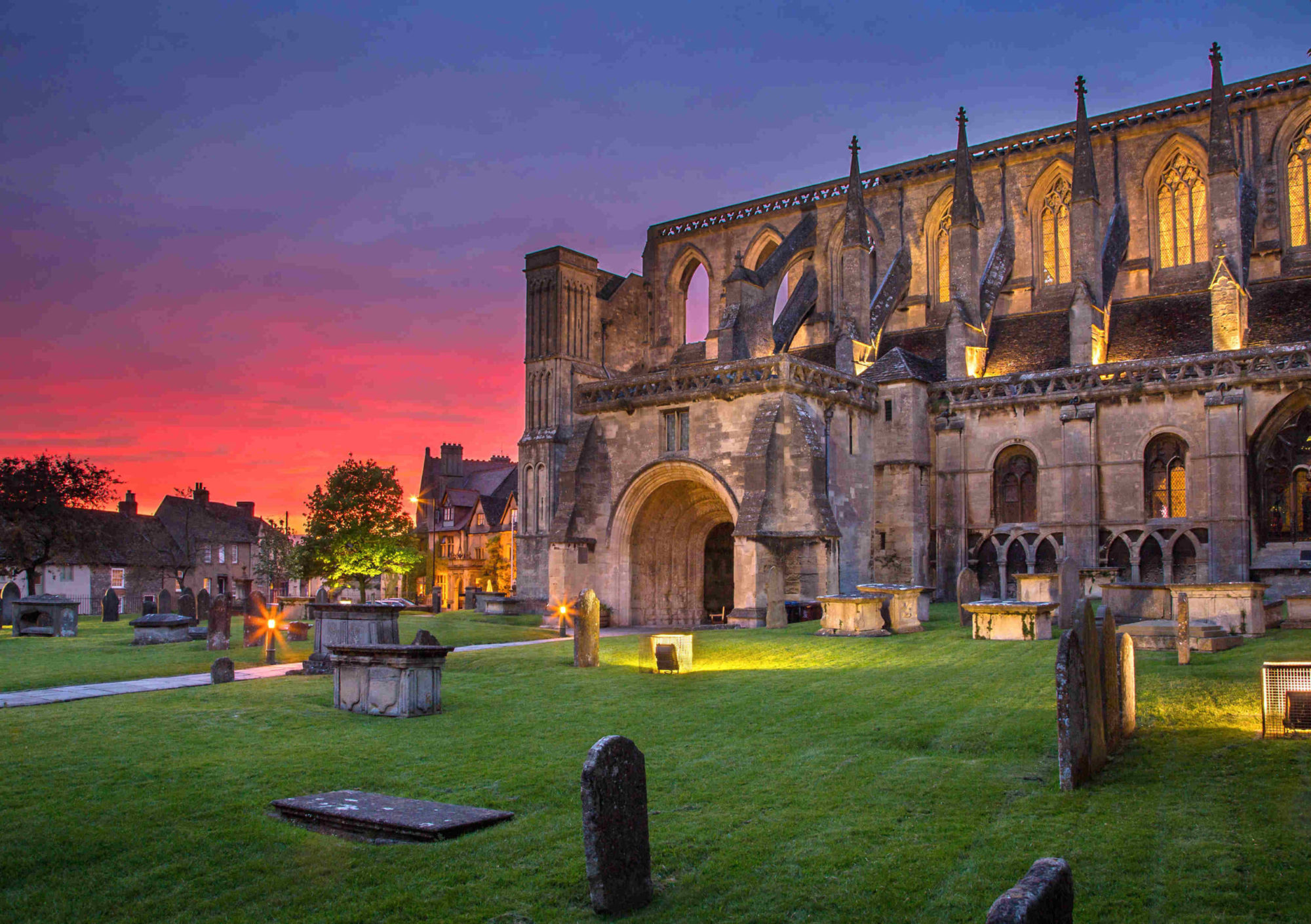Malmesbury Abbey was built in the 12th century for the glory and worship of God. It is a place of beauty, prayer and the very warmest welcome. Admission is free (though not without cost).
Over the centuries the Abbey has been a centre of education and creativity, a community of prayer and healing, and a place of battle and burial. Its worship has been shaped by Celtic pilgrims and Benedictine monks, and since the Reformation nearly 500 years ago, Malmesbury Abbey has been part of the Church of England, serving the local community as its parish church.
Since the re-emergence of Christianity to this region in the 6th century, Malmesbury has long been a place at the forefront of history. Thought to be the first capital of England, it was home to the first saint of Wessex (St Aldhelm), the first king of England (King Athelstan the Glorious), the first man to fly (Brother Eilmer), the father of modern English history (William of Malmesbury) and the father of English philosophy (Thomas Hobbes).
This building is the third abbey to stand on this site. The first was St Aldhelm’s earliest church, before he oversaw the construction of a larger, stone complex of churches located where the current graveyard lies. The present Abbey dates from 1180, and was added to in the following 200 years with a great spire that was the tallest building in England at the time, and a tower at the West End. But in the late 15th century – a generation before Henry VIII’s cull of the monasteries – the great spire fell, followed by the tower 100 years later. Only the nave of this once huge abbey remains.
A visitor to Malmesbury Abbey will see the tomb of King Athelstan, a 15th Century illuminated Bible, the crest of Henry VII, a breathtaking Norman porch which illustrates the Christian salvation history, and the poetic gravestone of Hannah Twynnoy, killed by a tiger, locally, in 1703.


